Library Management for the Digital Age
Editorial Advisory Board
Yvonne Chandler, associate professor, University of North Texas
Edwin M. Cortez, dean, School of Library and Information Science, University of Tennessee
Ken Haycock, research professor of management and organization and director of graduate programs in library and information management, University of Southern California
Maureen Sullivan, past president, American Library Association
Jennifer Weber, assistant professor and head librarian, Riverside Campus Library, Austin Community College
Library Management for the Digital Age
A New Paradigm
Julie Todaro
Rowman & Littlefield
Lanham Boulder New York Toronto Plymouth, UK
Published by Rowman & Littlefield
4501 Forbes Boulevard, Suite 200, Lanham, Maryland 20706
www.rowman.com
10 Thornbury Road, Plymouth PL6 7PP, United Kingdom
Copyright 2014 by Rowman & Littlefield
All rights reserved . No part of this book may be reproduced in any form or by any electronic or mechanical means, including information storage and retrieval systems, without written permission from the publisher, except by a reviewer who may quote passages in a review.
British Library Cataloguing in Publication Information Available
Library of Congress Cataloging-in-Publication Data
Todaro, Julie, 1950
Library management for the digital age : a new paradigm / Julie Todaro.
pages cm
Includes bibliographical references and index.
ISBN 978-1-4422-3069-9 (cloth : alk. paper) ISBN 978-1-4422-3015-6 (pbk. : alk. paper) ISBN 978-1-4422-3016-3 (ebook)
1. Library administration. 2. Library administrationCase studies. I. Title.
Z678.T63 2014
025.1dc23 2014001672
 The paper used in this publication meets the minimum requirements of American National Standard for Information SciencesPermanence of Paper for Printed Library Materials, ANSI/NISO Z39.48-1992. Printed in the United States of America
The paper used in this publication meets the minimum requirements of American National Standard for Information SciencesPermanence of Paper for Printed Library Materials, ANSI/NISO Z39.48-1992. Printed in the United States of America
Preface
The profession of library and information science has changed so dramatically in the last two decades that content about libraries in general as well as content about managing libraries, library employees, services, and resources is often too quickly out of date. Historical, classic, or even recent content is helpful in outlining directions and identifying how processes may be accomplished but, once applied to an environment, may no longer match the reality.
In my over thirty-five years in the profession in all types and sizes of libraries, the most challenging aspects of my job included the general management of the organization and the management of the myriad of employees working in the organization. Other most challenging aspects on my list include the management roles and responsibilities of working across lines of the organization with peers and colleagues as well as managing up to my immediate supervisors and other administrators and stakeholders.
In the search for content and techniques to assist me in creating contemporary structures to better manage activities, issues, and people in my own libraries, I realized that the best techniques were those that identified context in the workplace, meaningful connections of issues and activities to individual employee roles and responsibilities, and, most importantly, managing change and the identification of specific management issues and activities changing or being introduced into the workplace.
While each workplace is unique, my experience in a variety of types and sizes of libraries and my commitment to a focus on all types and sizes of libraries, has provided me with a unique perspective that has enriched all of my positions and given me an appreciation not only of the extent of differences among libraries and librarians, but also of the similarities within the profession and among professionals. This book is my attempt, therefore, to capture the breadth of the profession and to identify techniques and processes for managing that breadth. I would hope that readers both in educational settings and in practice will be able to recognize themselves or their workplaces in this content and/or use the techniques and processes to identify their own solutions.
Recommending the best professional management literature (books, journals, website content) of today to accompany this book content, however, is a book in and of itself. In sorting through recommended resources, I struggled to define general vs. specific types of management as well as management by size and type of organization, profit vs. nonprofit, and nonlibrary vs. library content, and use-in-practice vs. education and training. Instead of adding hundreds of titles, I identified what I considered to be indispensable for a managers bookshelf. This general annotated list is located in the appendices; however, recommended sources for each chapter are located at the end of the chapter.
The title of a nonfiction book should communicate to readers an idea of not only context but also general content and, if possible, application of content. Library Management for the Digital Age: A New Paradigm offers readers an opportunity to find themselves within the text or make their own application of content rather than telling readers this is the only way. As such:
content includes information on all types and sizes of libraries
content includes a wide variety of management situations
readers will find themselves on either or both sides of paradigms and can also decide to create new paradigms
readers from the lowest to the highest tech library environment not only will be able to find, identify, or locate themselves and their libraries, but also will be able to find multiple ways (both classic and new) to articulate issues as well as multiple ways (both classic and new) to identify solutions
Book Organization: Part I
Library Management for the Digital Age: A New Paradigm introduces library managers and librarians who wish to be managers to the new management within the twenty-first-century library environment; the content is intended to be analyzed in a variety of ways including the use of case method. In addition, in part I, content is also illustrated and analyzed through the use of Paradigm Shifts, which are used to compare and contrast the old, classic management style with new, contemporary management practices. The sixteen chapters are as follows:
Chapter 1. Classic Management vs. New Management
Library managers must be able to understand not only their workplace environment but also the practice of management and the role of change in management.
Chapter 2. Preparing and Maintaining the New Manager
Learning how to manage has changed and learning opportunities include education, training, professional development, and/or continuing education.
Chapter 3. Managing New Employees/Staff/Human Resources/Stakeholders
A major part of learning a workplace environment is getting to know the organizations employees including how they have changed, how they have stayed the same, and how to choose appropriate methods of managing, directing, and coordinating.
Chapter 4. New Management of Change
Todays managers must be able to define change and assist others in issues surrounding change as well as techniques for dealing with resistance to change and embracing change.
Chapter 5. New Managers Designing New Organizations
Managers must assess organizations to determine if structures and practices need to be changed to meet the needs created by changing work environments.
Chapter 6. Management Infrastructure Documents in New Organizations
An organizations management documents must be continuously assessed to determine if they keep up with the dramatic rate of change found in work environments today.
Next page
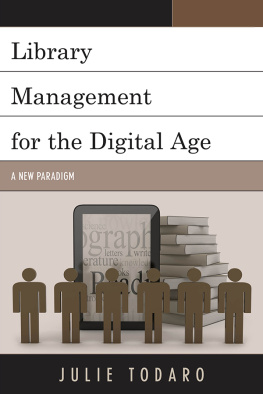

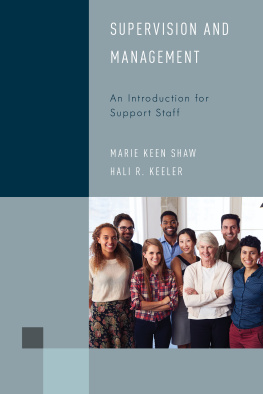
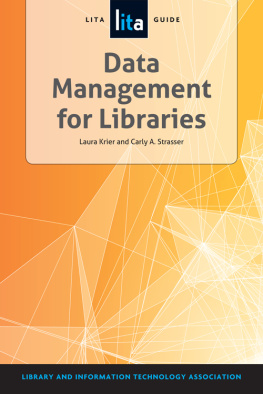
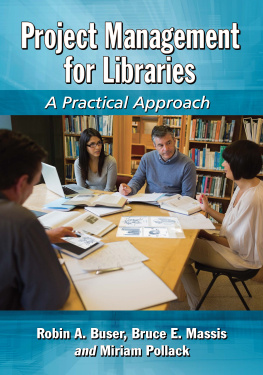
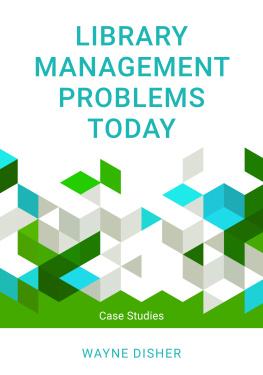
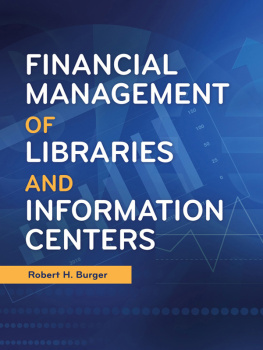
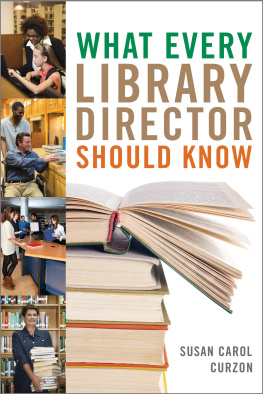
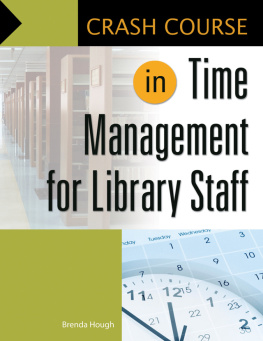
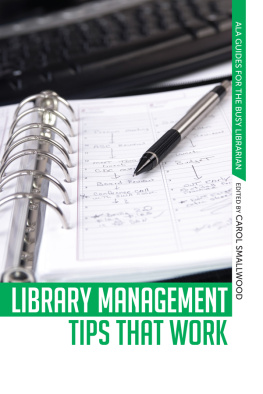
 The paper used in this publication meets the minimum requirements of American National Standard for Information SciencesPermanence of Paper for Printed Library Materials, ANSI/NISO Z39.48-1992. Printed in the United States of America
The paper used in this publication meets the minimum requirements of American National Standard for Information SciencesPermanence of Paper for Printed Library Materials, ANSI/NISO Z39.48-1992. Printed in the United States of America